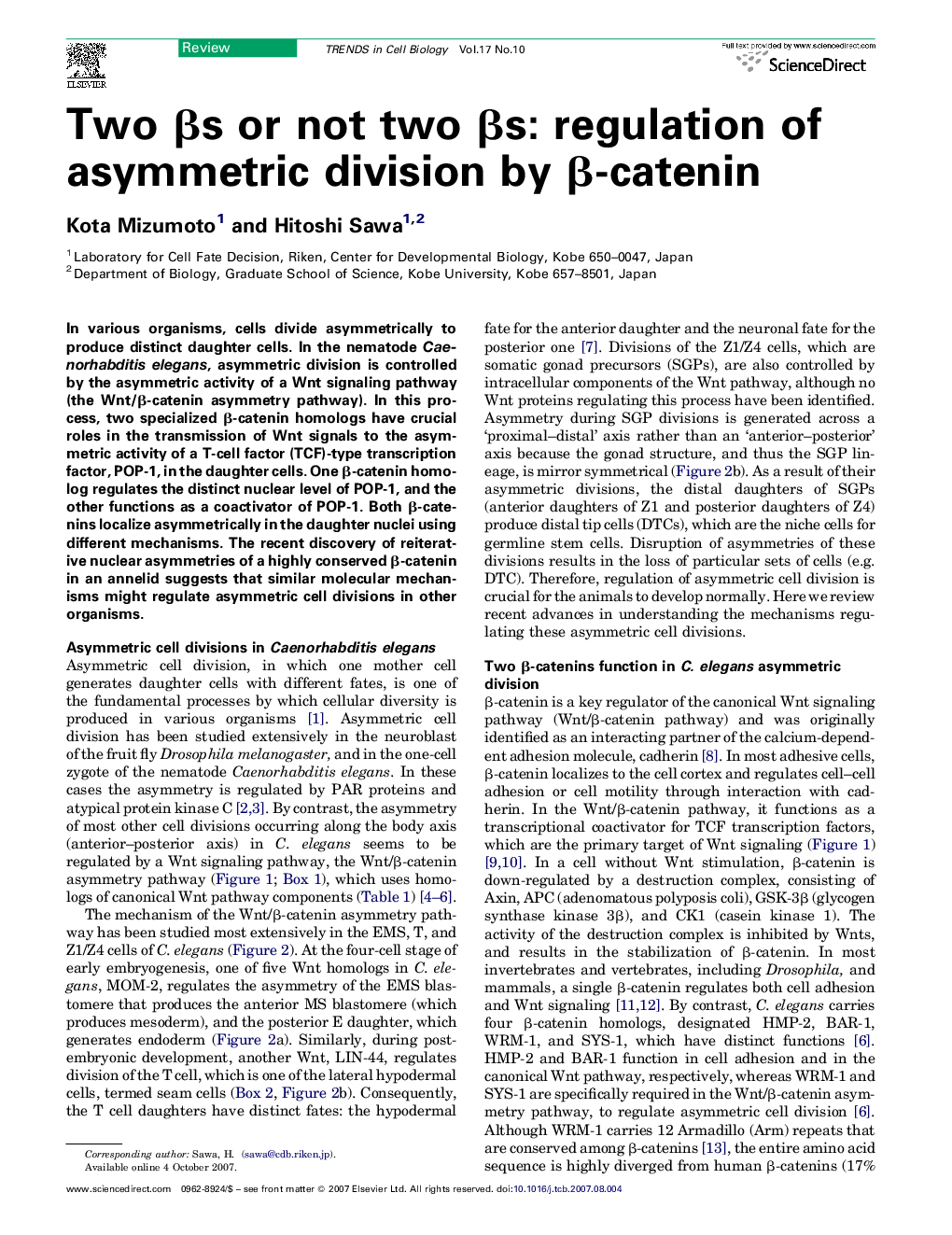| Article ID | Journal | Published Year | Pages | File Type |
|---|---|---|---|---|
| 2204984 | Trends in Cell Biology | 2007 | 9 Pages |
In various organisms, cells divide asymmetrically to produce distinct daughter cells. In the nematode Caenorhabditis elegans, asymmetric division is controlled by the asymmetric activity of a Wnt signaling pathway (the Wnt/β-catenin asymmetry pathway). In this process, two specialized β-catenin homologs have crucial roles in the transmission of Wnt signals to the asymmetric activity of a T-cell factor (TCF)-type transcription factor, POP-1, in the daughter cells. One β-catenin homolog regulates the distinct nuclear level of POP-1, and the other functions as a coactivator of POP-1. Both β-catenins localize asymmetrically in the daughter nuclei using different mechanisms. The recent discovery of reiterative nuclear asymmetries of a highly conserved β-catenin in an annelid suggests that similar molecular mechanisms might regulate asymmetric cell divisions in other organisms.
